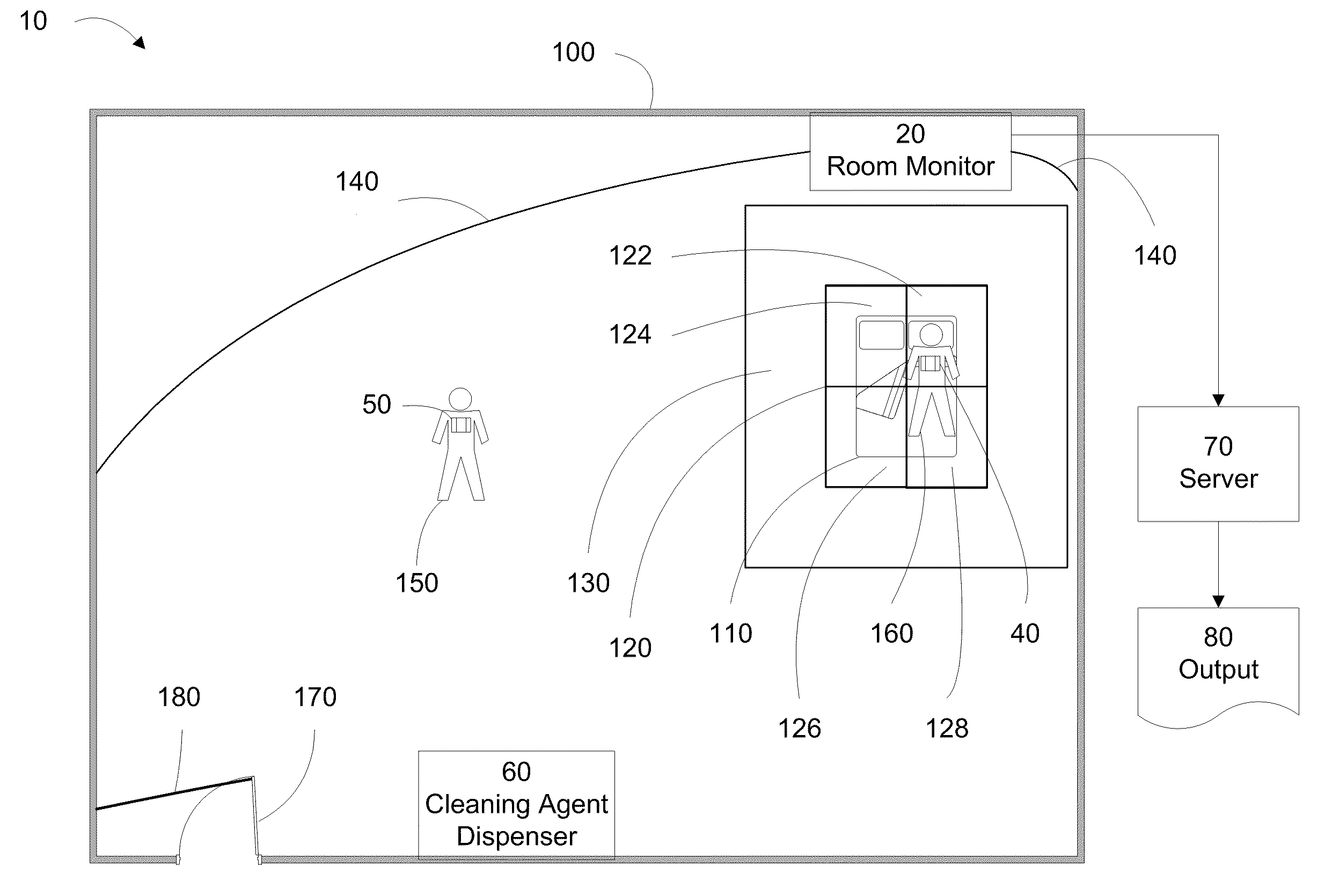System for monitoring patient safety suited for determining compliance with hand hygiene guidelines
a hand hygiene and patient safety technology, applied in the field of monitoring patient safety, can solve the problems of not being able to monitor the interaction of persons with patients and their surroundings, lack of sustainability and standardization, and observer bias, and achieve the effect of being easily overlooked by users
- Summary
- Abstract
- Description
- Claims
- Application Information
AI Technical Summary
Benefits of technology
Problems solved by technology
Method used
Image
Examples
Embodiment Construction
[0044]Continuing the discussion in the Summary of the Invention section, and referring to FIG. 4, the room monitor 20 used to monitor the area 100 may include an antenna405, an RF transceiver 410 (which may operate in the industrial, scientific and medical (“ISM”) radio band), a micro controller 415 (which may control, for example, the LEDs discussed below), a camera interface chip 420 (which interfaces with the camera and may be controlled by the micro controller 415), a hard drive 425 (which may store, for example, recorded data and / or instructions to be executed by the room monitor 20), a yellow (visible) LED 430, a red (visible) LED 435, an 830 nm IR LED 440 (for illumination), a 940 nm IR LED 445 (for communication), a camera 450 (operating, for example, in the visible and near-infrared spectra), a main central processing unit (“CPU”) 455 (which may include a processor and an operating system (“OS”) for controlling the room monitor 20), a wireless communicator 460 (which may us...
PUM
 Login to View More
Login to View More Abstract
Description
Claims
Application Information
 Login to View More
Login to View More - R&D
- Intellectual Property
- Life Sciences
- Materials
- Tech Scout
- Unparalleled Data Quality
- Higher Quality Content
- 60% Fewer Hallucinations
Browse by: Latest US Patents, China's latest patents, Technical Efficacy Thesaurus, Application Domain, Technology Topic, Popular Technical Reports.
© 2025 PatSnap. All rights reserved.Legal|Privacy policy|Modern Slavery Act Transparency Statement|Sitemap|About US| Contact US: help@patsnap.com



